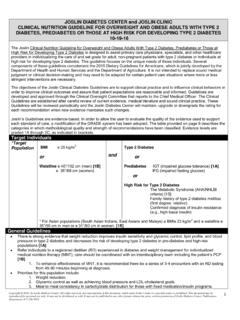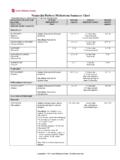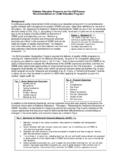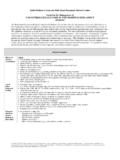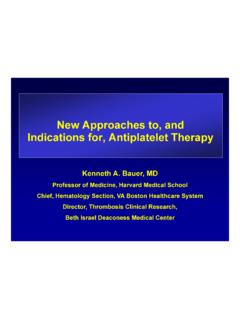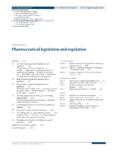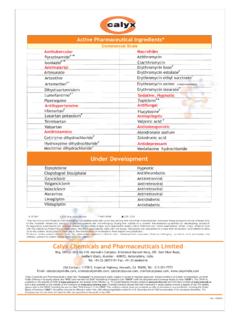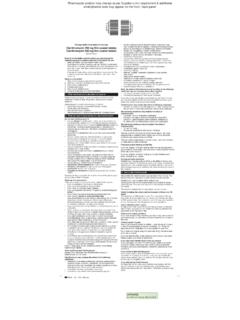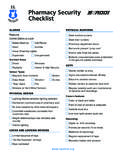Transcription of Joslin Diabetes Center & Joslin Clinic Clinical …
1 Copyright 2016 by Joslin Diabetes Center . All rights reserved. Any reproduction of this document, which omits Joslin s name or copyright notice is prohibited. This document may be reproduced for personal use only. It may not be distributed or sold. It may not be published in any other format without the prior, written permission of Joslin Diabetes Center , Publications Department, 617-309-5815. Please refer to Joslin s web site, , for the most current version of our Clinical Guidelines. Joslin Diabetes Center & Joslin Clinic Clinical Guideline for Pharmacological Management of Adults with Type 2 Diabetes 10/08/2016 The objectives of the Joslin Diabetes Center & Joslin Clinic Clinical Guideline for Pharmacological Management of Adults with Type 2 Diabetes are to support Clinical practice, influence Clinical behavior to improve outcomes and to assure quality of care according to accepted standards.
2 The Guideline was established after careful review of current evidence, literature and Clinical practice. This Guideline will be reviewed periodically and modified to reflect changes in Clinical practice and available pharmacological information. This Clinical Guideline is not intended to serve as a mandatory standard, but rather to provide a set of recommendations for patient care management. These recommendations are not a substitute for sound and reasonable Clinical judgment or decision-making and do not exclude other options. Clinical care must be individualized to the specific needs of each patient and interventions must be tailored accordingly. The Guideline has been created to address initial presentations and treatment strategies in the adult non-pregnant patient population.
3 The Guideline is not a substitution for full prescribing information. Refer to Joslin s Clinical Guideline for Adults with Diabetes as well as Joslin s Guideline for the Care of Older Adults with Diabetes for additional, more comprehensive information on Diabetes care and management. Diabetes Mellitus Diagnostic Criteria (Non-Pregnant Adults) Random plasma glucose > 200 mg/dl and symptoms of Diabetes (polyuria, polydipsia, ketoacidosis, or unexplained weight loss) OR Glycated Hemoglobin (A1C) > ** OR Fasting plasma glucose (FPG)* >126 mg/dl OR Results of a 2-hour 75-g Oral Glucose Tolerance Test (OGTT)* > 200 mg/dl at 2 hours * These tests should be confirmed by a repeat test, on a different day, unless unequivocally high ** Only an A1C test that has been referenced to an accepted laboratory method (standardized) should be utilized for diagnostic purposes Goals of Glycemic Control for People with Diabetes Biochemical Index Normal Goal1 fasting plasma glucose or preprandial glucose (mg/dl)
4 < 100 80 130 2 hours post-prandial (mg/dl) < 140 < 180 bedtime glucose (mg/dl) < 120 90 150 A1C (%) sustained < 6% < 7% A1C target goal should be individualized for each patient. A goal of < 7% is chosen as a practical level for most patients to reduce the risk of complications. Achieving normal blood glucose and A1C is recommended if it can be done practically and safely. Less stringent goals may be considered for older adults or those with advanced comorbidities (see Joslin s Guideline for Older Adults with Diabetes ). Copyright 2016 by Joslin Diabetes Center . All rights reserved. Any reproduction of this document, which omits Joslin s name or copyright notice is prohibited. This document may be reproduced for personal use only. It may not be distributed or sold.
5 It may not be published in any other format without the prior, written permission of Joslin Diabetes Center , Publications Department, 617-309-5815. Please refer to Joslin s web site, , for the most current version of our Clinical Guidelines.. INITIAL TREATMENT STRATEGY Nutrition therapy (NT), physical activity, blood glucose monitoring and patient education are the cornerstones of Diabetes management for all patients. Pharmacological management should be used in combination with nutrition therapy and physical activity. Current weight status and lifestyle should be considered when choosing initial pharmacological therapy. Initial Presentation (Based on characteristics listed within each box) Mild Intermediate Severe Marked hyperglycemia ( if FPG > 250 mg/dl, A1C >10%, random glucose >350 mg/dl)
6 OR Significant weight loss OR Severe/significant symptoms OR 2+ or greater ketonuria OR DKA/ hyperosmolar state OR Severe intercurrent illness or surgery Hyperglycemia ( FPG > 150 mg/dl2 or elevated random glucose > 250 mg/dl2 AND/OR A1C > Does not meet criteria for mild or severe Start NT and physical activity and consider addition of metformin Start metformin. Choose alternate drug if metformin is contraindicated Mild or no symptoms AND Negative ketones AND No acute concurrent illness AND A1C < See page 3 section on INITIATE OR ADD INSULIN See next page: ADVANCING ANTIDIABETES MEDICATION THERAPY Start insulin immediately 3 Titrate dose over 1-3 months.)
7 Reinforce NT and physical activity If initial therapy results in the patient reaching goals, periodically reassess medication use and effectiveness If patient discharged from hospital on new Diabetes medications, re-assess medication choices and dosing If after 6-8 weeks, target not met Copyright 2016 by Joslin Diabetes Center . All rights reserved. Any reproduction of this document, which omits Joslin s name or copyright notice is prohibited. This document may be reproduced for personal use only. It may not be distributed or sold. It may not be published in any other format without the prior, written permission of Joslin Diabetes Center , Publications Department, 617-309-5815.
8 Please refer to Joslin s web site, , for the most current version of our Clinical Guidelines. 4,5,6 If A1C >7% or not at individualized goals within 1-3 months: ADVANCING ANTIDIABETES MEDICATION THERAPY INITIATE ORAL ANTIDIABETES MEDICATION OR ADD ADDITIONAL ORAL Diabetes MEDICATION OF A DIFFERENT CLASS INITIATE OR ADD INSULIN 4,5,6 Consider starting with: Long-acting insulin detemir or insulin glargine U-100 once or twice dail y or once daily degludec or insulin glargine U-300 for basal therapy Intermediate-acting insulin (NPH) once or twice daily, as part of a conventional program Premixed insulin: 75/25 NPH/lispro, 50/50 NPH/lispro, 70/30 NPH/aspart, 70/30 NPH/regular insulin or 70/30 degludec/aspart once or twice daily Suggested starting dose for insulin.
9 Units/kg body weight/day Titrate/adjust insulin dosage to achieve glucose goals ADD GLP-1 RECEPTOR AGONIST OR INSULIN TO ORAL ANTIDIABETES MEDICATION 4,5,6 IF 2 - 3 MONTHS AFTER ADDITION OF ORAL ANTIDIABETES MEDICATION, INSULIN OR GLP-1 AGONIST, A1C > 7% OR NOT AT INDIVIDUALIZED GOALS, CONSIDER: 4,5,6 Combining GLP-1 with basal insulin Adding pre-meal rapid or short-acting insulin ( aspart, glulisine, lispro, regular or human insulin inhalation) to intermediate or long-acting insulin Adding or switch to a premixed rapid acting and long acting insulin Adding basal insulin and adjusting the rapid or short-acting insulin Changing to multidose insulin therapy using combination of rapid, short, intermediate, or long-acting insulin Adding oral antidiabetes medication to improve glycemic control if already on insulin (metformin, sulfonylureas, meglitinide, D-phenylalanine, DPP-4 inhibitors, GLP-1 agonist, -glucosidase inhibitors, SGLT-2 inhibitors, TZDs6 and colesevelam are approved for use in combination with insulin)
10 If post-prandial excursions predominate, refer to endocrinologist for reassessment of therapy or for consideration of pramlintide use. Copyright 2016 by Joslin Diabetes Center . All rights reserved. Any reproduction of this document, which omits Joslin s name or copyright notice is prohibited. This document may be reproduced for personal use only. It may not be distributed or sold. It may not be published in any other format without the prior, written permission of Joslin Diabetes Center , Publications Department, 617-309-5815. Please refer to Joslin s web site, , for the most current version of our Clinical Guidelines. CONSIDERATIONS FOR SELECTING NON-INSULIN GLUCOSE LOWERING MEDICATIONS START WITH METFORMIN UNLESS CONTRAINDICATED Action: Decreases hepatic glucose production, increases GLP-1 secretion.
